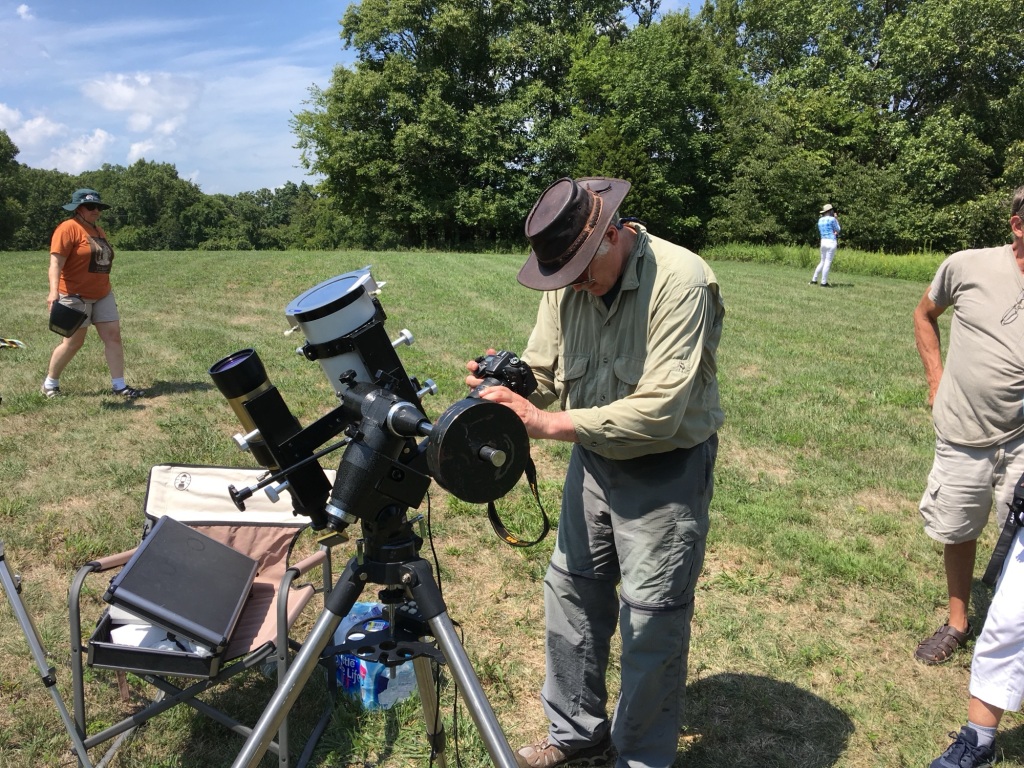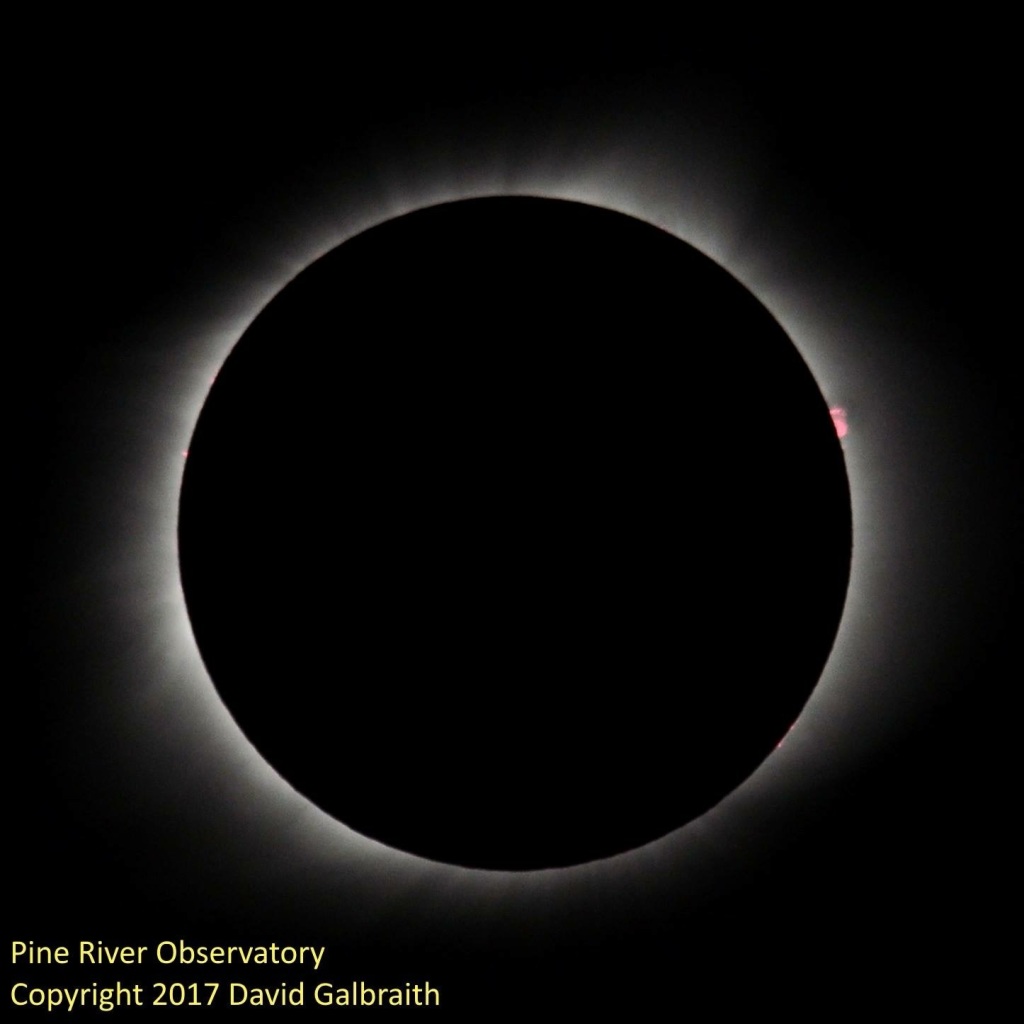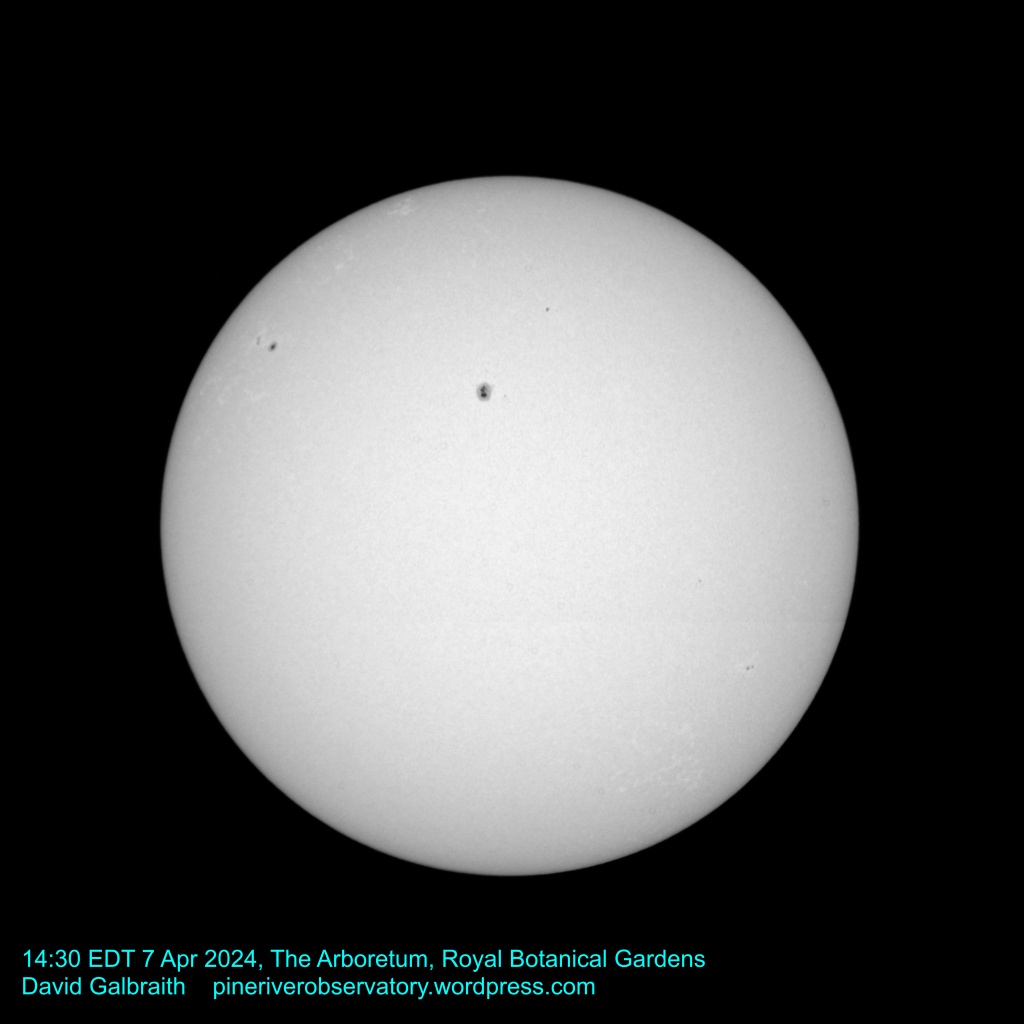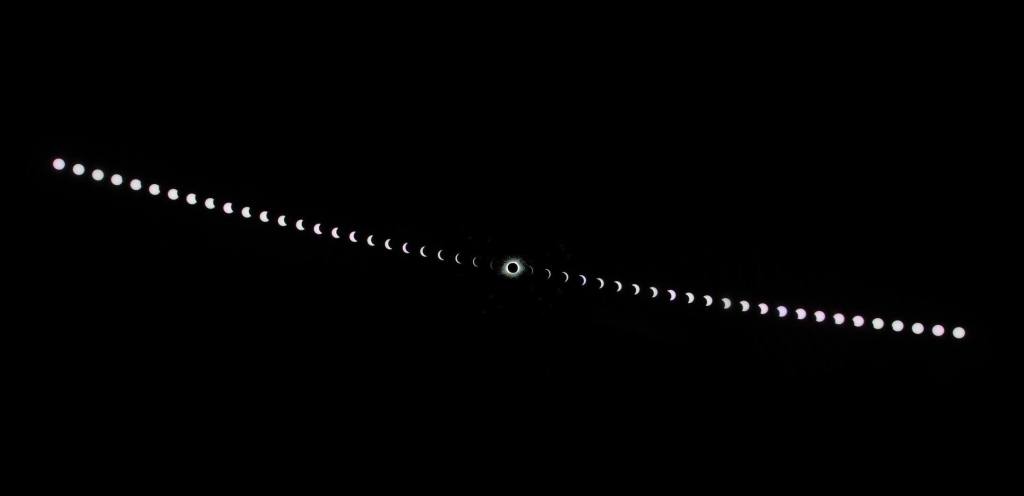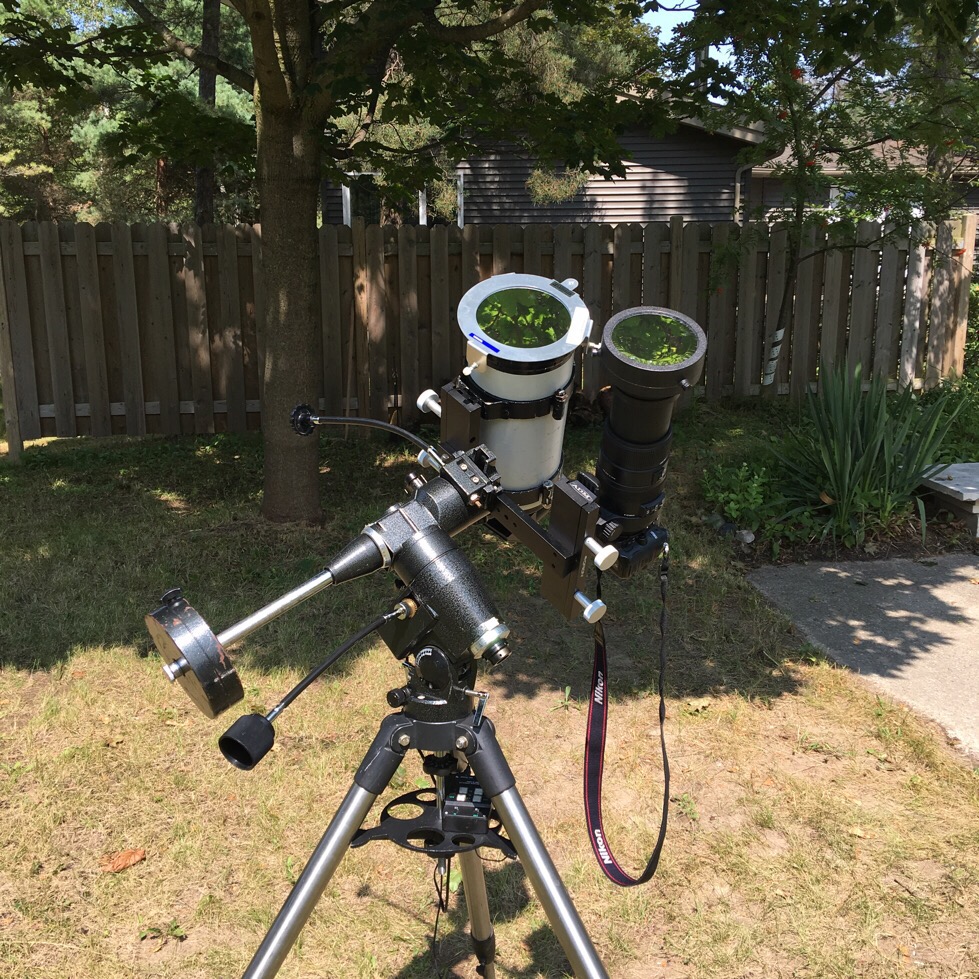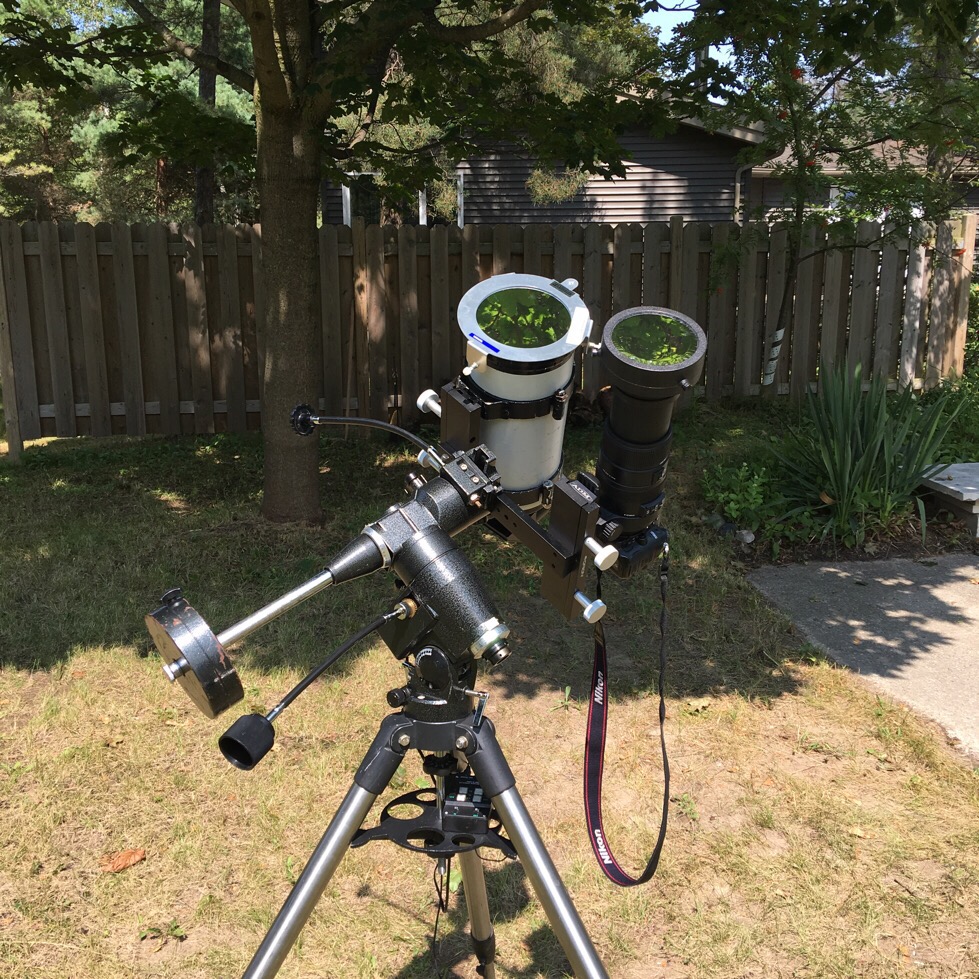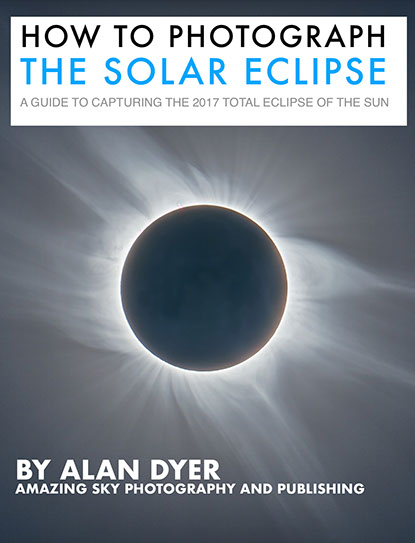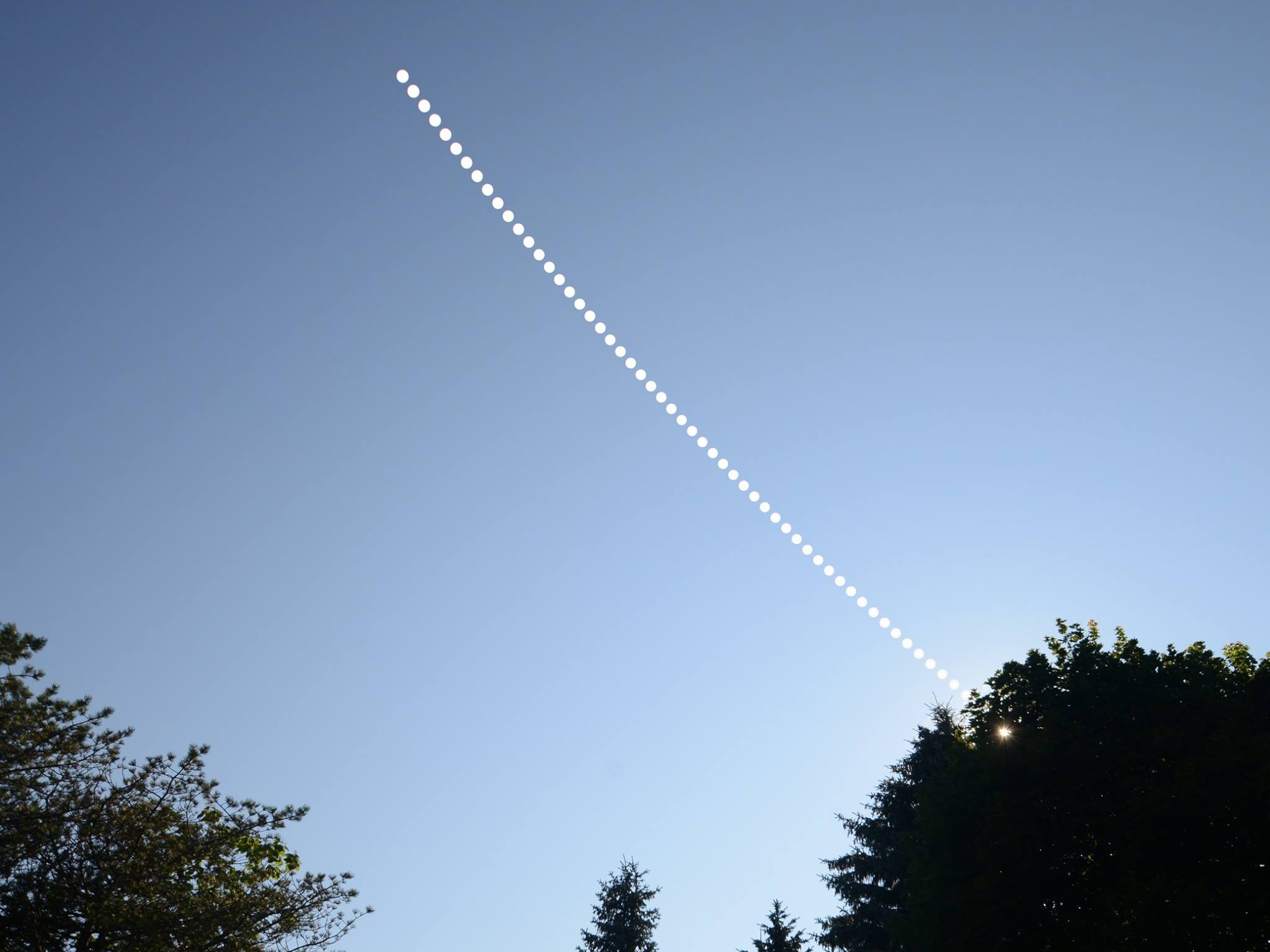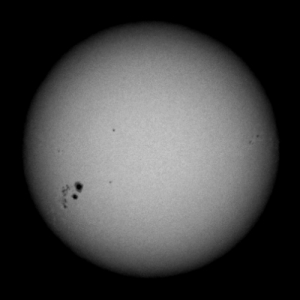This is the second blog post about the April 8th 2024 total solar eclipse that was witnessed by hundreds at Royal Botanical Gardens (Canada) in Hamilton, Ontario. I had the privilege of being the interpretive lead for the event, and was able to provide my own telescope for people to view the partial phases of the eclipse in safety. A previous blog post described the preparations for the event.
Monday 8th April started out as an inauspicious looking day. The weather forecast was largely for cloud in the Hamilton area, and everyone was feeling a little pessimistic as to whether we would see anything other than a great big shadow in the afternoon. I arrived at the RBG Arboretum around 11:00 AM to start setting up my telescope and to get a feeling for the space in which the audience would experience the event.
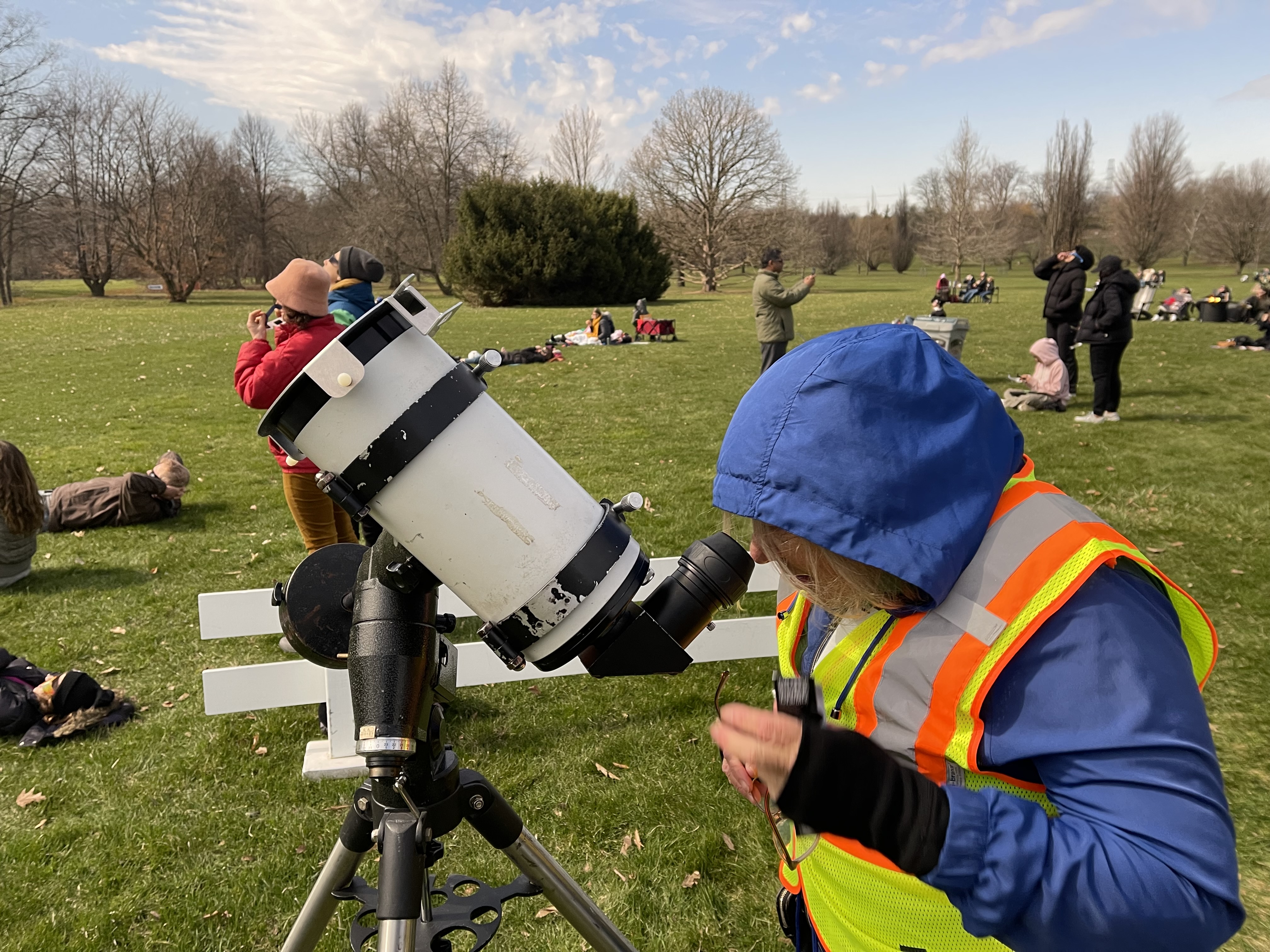
My little 5” Meade Terabeam Maksutov Cassegrain telescope went together very quickly, and I did an approximate north alignment of the German equatorial mount, but on a completely cloudy day that kind of thing is iffy at best. I must admit that as an amateur astronomer I’m not terribly interested or capable of doing alignments. I have never been really able to get a good alignment on my telescope mounts. I have a lovely EQ 6 mount that is currently underutilized, and the smaller, beaten-up black mount (is an EQ4? I don’t know) that I use for the Mak-Cas. I set everything up, and was satisfied that it was going to be a workable telescope for public viewing. Unlike most 5” Meade telescopes, this telescope has a custom 2” optical back, which allows for 2” eyepieces to be fitted, as well as full frame DSLR cameras. For the eclipse I set up a 2 inch eyepiece so that the public could view the eclipse through the telescope when safely fitted out with an aluminized mylar solar filter
Shortly after noon I got a call from our communications specialist Cassandra who wanted to see if I could come to a different part of RBG and do an interview with the CBC. RBG owns and manages a large set of properties, and the prospect of having to drive for 15 minutes from site to site just before the eclipse started did not necessarily appeal. However, I thought I had better do my duty as Director of Science, responsible for science communication. When I reached the gardens in Hendrie Park, I found that the Ontario Science Centre had set up an interpretive table and were working with grade 12 students on interpreting the eclipse for the public. A CBC video crew was also there to transmit their impressions of the eclipse and the Ontario Science Centre efforts. I did two short interviews with the CBC crew about 20 minutes apart, and then popped back into my car and headed back to the Arboretum. While I was on the road to the Arboretum the eclipse had started. I was back at the Arboretum about 10 minutes later. At this point things were still completely cloudy.
I started working with the telescope to see whether I could catch any kind of glimpse of the eclipse, and I was also equipped with eclipse glasses. It was some time before the clouds started to show some blue and break up, but they did. About 10 or 15 minutes before totality we started seeing good views of the sun through light, high cloud. There were even breaks where some parts of the sky were completely clear. The clouds were moving quickly, and it made for a very dramatic atmosphere, would we or would we not see the eclipse in totality?
People started to line up to view the partial eclipse with the telescope, and there were a lot of very positive comments about that experience. A couple of nice sunspots made the view of the sun more interesting than a non decorated solar disk would appear.

Just before totality, the clouds opened up and while there was high cloud during totality from our point of view we had a pretty good view of totality. It only lasted 87 seconds in the arboretum, a very short experience. But, it was thrilling, and I was able to get a few good photographs using a handheld Nikon camera and a fifth 150 to 500mm telephoto lens without filter out totality.
After totality and the sun burst through again there was just a lot of ooohs and awwws, and some applause, as everyone put their eclipse glasses back on and thought about the experience they had just had. Over the next hour I continued to offer viewing through the telescope, which was convenient but did need to be realigned manually every couple of minutes, as I did not have a motor drive working. While someone inconvenient it did work, and it meant I had to be on hand to make sure that people were looking at the sun safely. I should note that I have a nice 60 mm Coronado Solar Max Hydrogen alpha telescope, but without a mount tracking the sun I’ve found it too complicated to used for a public event like this.
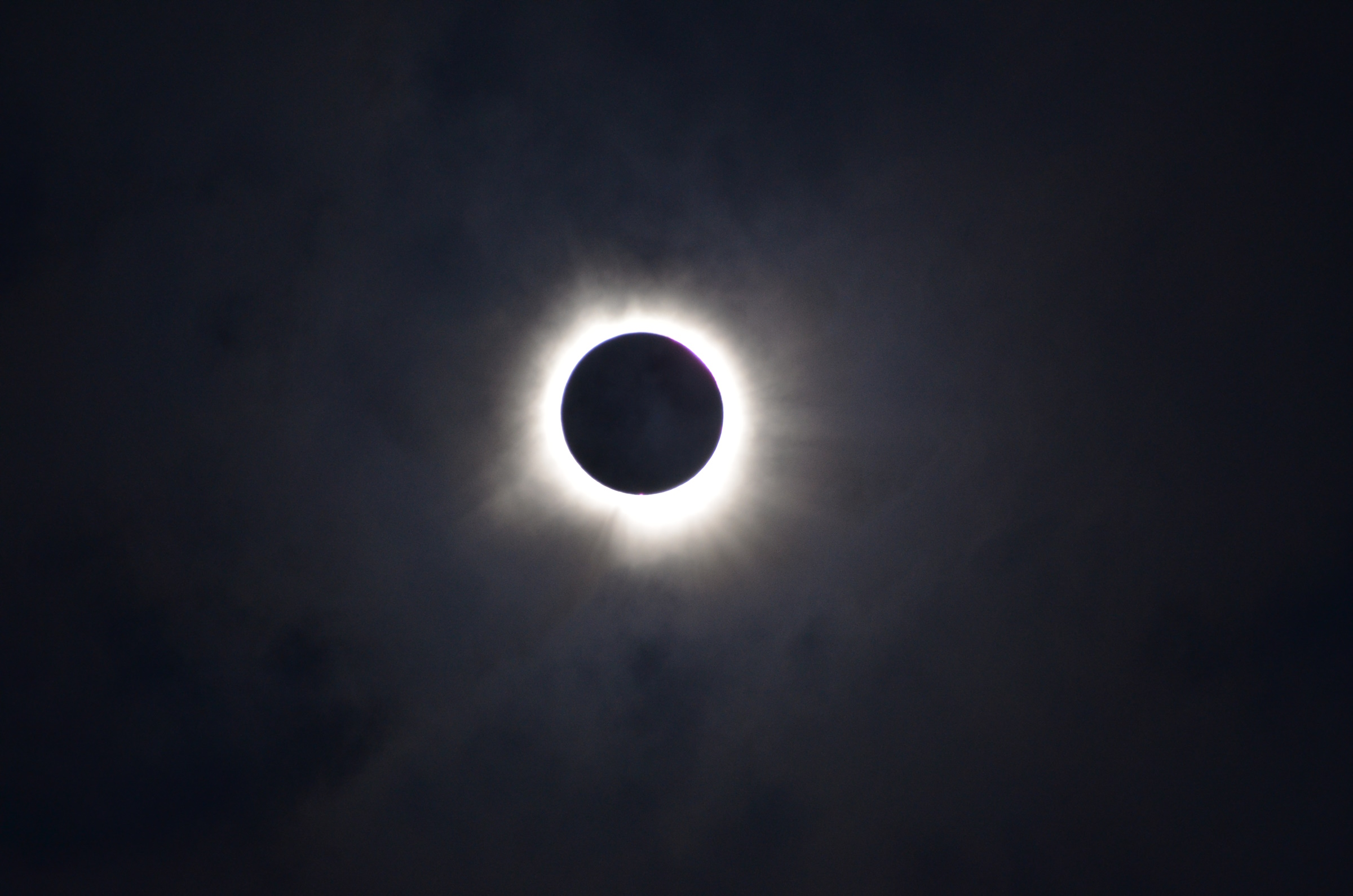
I took a few more photographs of the sun with a 300 mm telephoto lens with a solar filter on it, and as the sky lightened up people gradually started drifting off. By the time the eclipse was completed the vast majority of people had left for home.
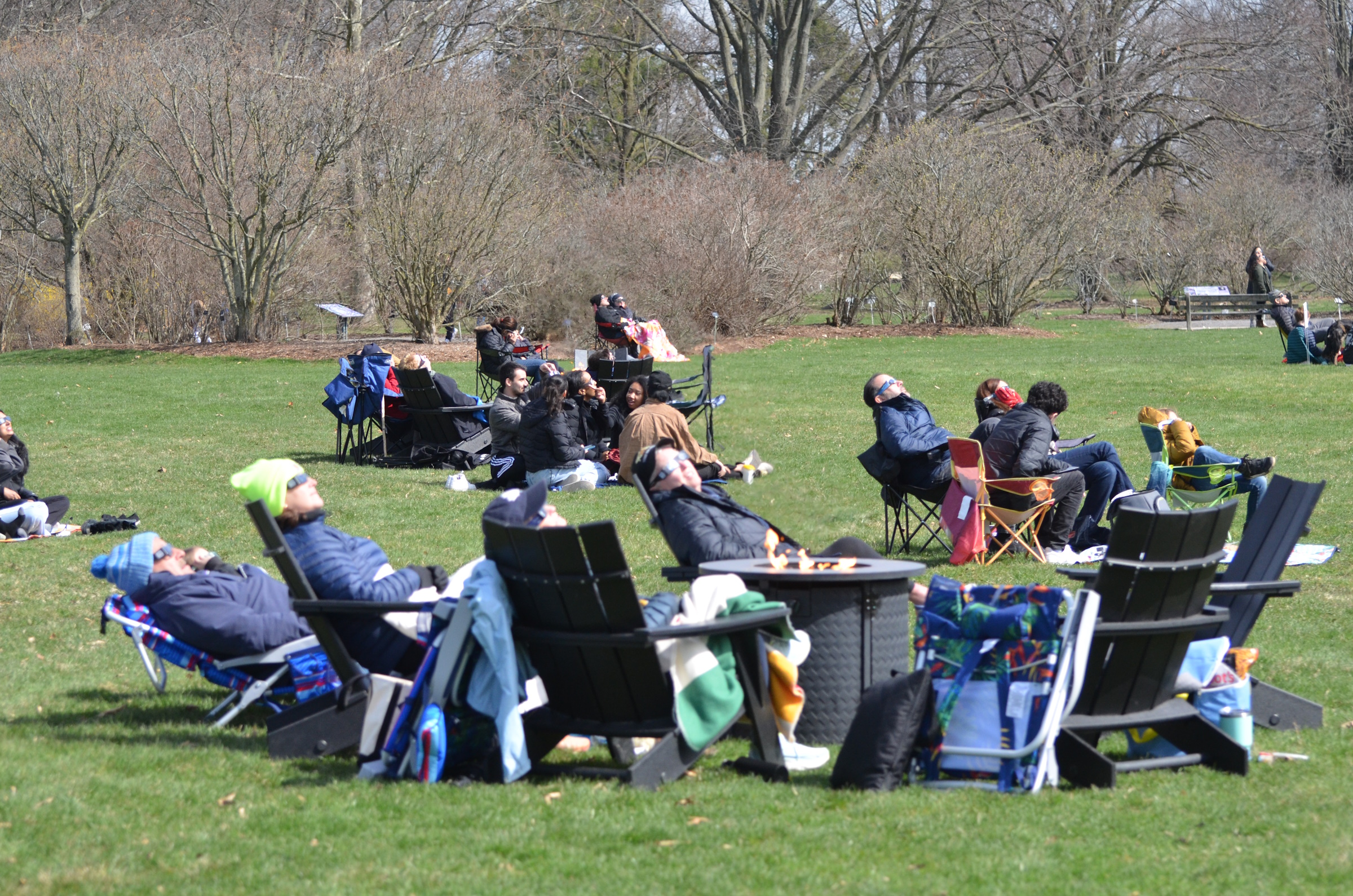
This was an exciting total solar eclipse despite the clouds. The crowd was happy, the views were good even with high cloud at times, and it ranks up with the experience I had in 2017 of a total solar eclipse viewed in Missouri. That was a longer totality, but the environment was quite different. Both were worthwhile. I hope that if anyone has an opportunity to view a total solar eclipse they will make it a priority. While not common, these do not have to be once in a lifetime experiences if you are willing to travel.
Safe viewing!

